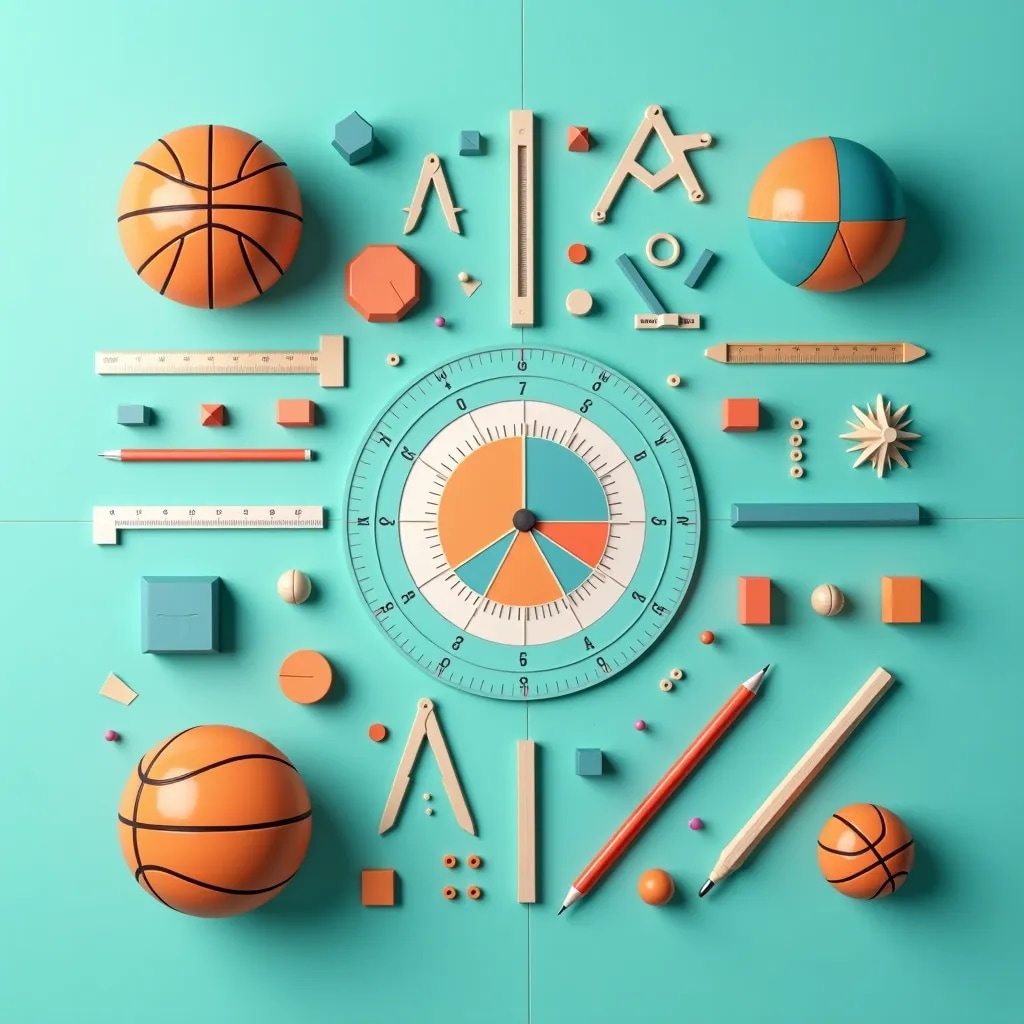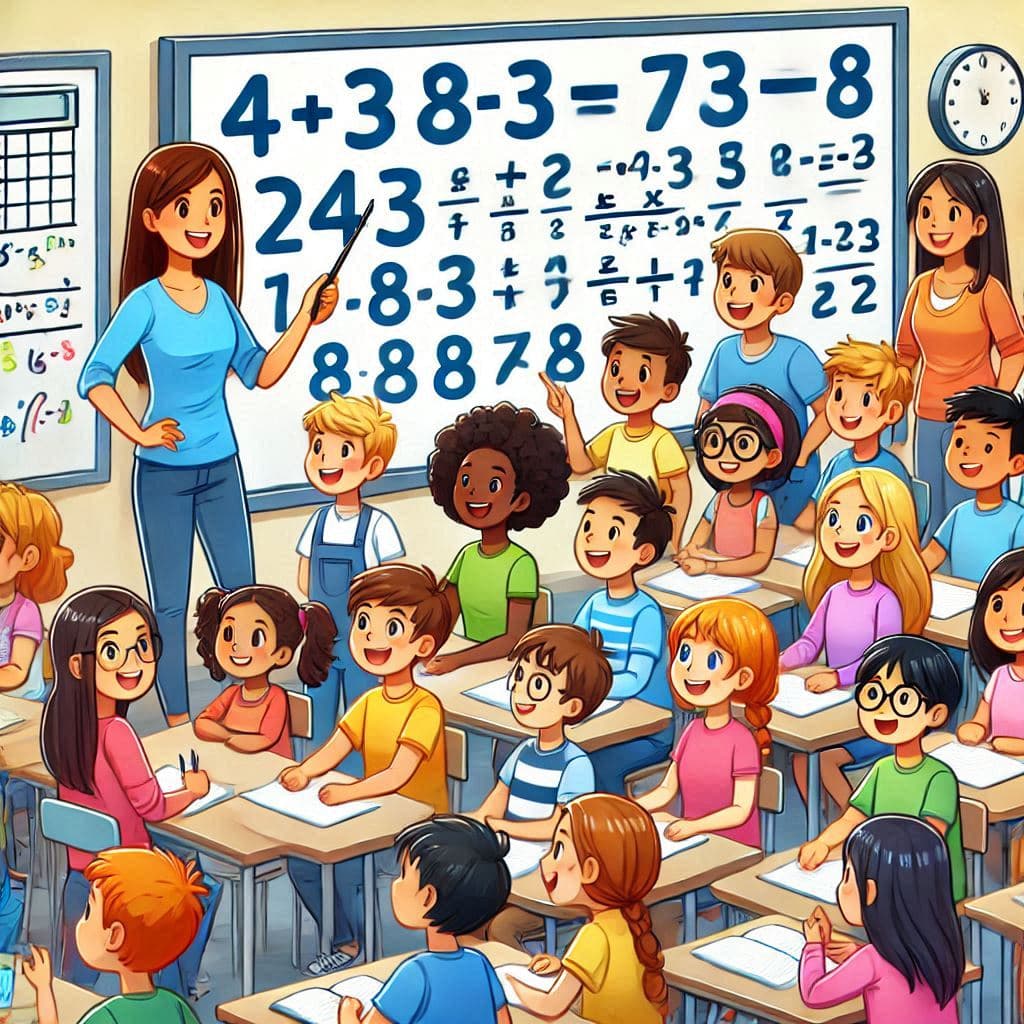Geometry Fundamentals: Points, Lines, and Planes

Geometry is one of the oldest branches of mathematics, dealing with the properties and relationships of points, lines, surfaces, and shapes. In this post, we will explore three fundamental concepts in geometry: points, lines, and planes. These building blocks are crucial for understanding more advanced topics in mathematics and real-world applications like architecture, engineering, and design.
Points
A point is the most basic element in geometry. It represents a precise location in space but has no dimensions (length, width, or height).
Properties of Points:
- A point has no length, width, or height.
- A point is represented by a dot (.) or a small cross (+) on a graph.
- Points can be used to define the position of an object or a location in space.
- Points can be connected to form lines, planes, and other geometric shapes.
Imagine placing a single dot on a piece of paper. That dot represents a point:
A
•
Lines
A line is a straight, continuous arrangement of points that extends infinitely in both directions. Unlike a point, a line has only one dimension: length.
Properties of Lines:
- A line has length, but no width or height.
- A line can be straight or curved.
- A line can be defined by two points.
- Lines can intersect or be parallel to each other.
Types of Lines:
- Straight Line: A line that extends infinitely in two directions and has a constant slope.
- Curved Line: A line that extends infinitely in two directions, but has a varying slope.
- Horizontal Line: A line that extends infinitely in two directions and has a slope of zero.
- Vertical Line: A line that extends infinitely in two directions and has an undefined slope.
-
Representation: Lines are often drawn with arrows on both ends to indicate that they extend infinitely. They are labeled using lowercase letters (e.g., line "l") or by naming two points on the line (e.g., "line AB").
-
Types of Lines:
- Line Segment: A portion of a line with two endpoints.
- Ray: A line that starts at a point and extends infinitely in one direction.
-
Line:
<----------> A B -
Line Segment:
A --------- B -
Ray:
A --------->
Planes
A plane is a flat, two-dimensional surface that extends infinitely in all directions. It has length and width but no thickness.
Properties of Planes:
- A plane has length and width, but no height.
- A plane can be defined by three points.
- Planes can intersect or be parallel to each other.
Types of Planes:
- Horizontal Plane: A plane that extends infinitely in all directions and has a constant z-coordinate.
- Vertical Plane: A plane that extends infinitely in all directions and has a constant x or y coordinate.
- Inclined Plane: A plane that extends infinitely in all directions and has a varying slope.
Key Characteristics:
- Representation: Planes are often represented as a parallelogram or a flat sheet in diagrams. They are labeled using a single uppercase letter (e.g., plane "P") or by three non-collinear points on the plane (e.g., plane "ABC").
- Coplanarity: Points and lines that lie on the same plane are called coplanar.
A plane can be visualized as a flat sheet containing points and lines:
Plane P
_________
| |
| A B |
|____C____|
Relationships Between Points, Lines, and Planes
- Collinear Points: Points that lie on the same line.
- Coplanar Points and Lines: Points and lines that lie on the same plane.
- Intersections:
- Two lines can intersect at a point.
- A line and a plane can intersect at a point.
- Two planes can intersect along a line.
Example:
Consider a plane with a line passing through it. The line intersects the plane at point P:
Plane P
_______
| • |
| / \ |
| / \ |
|/_____•| <- P
Real-Life Applications
Understanding points, lines, and planes helps in various real-world scenarios:
- Architecture: Designing stable structures involves the careful placement of lines and planes.
- Navigation: Points and lines are used to map routes and trajectories.
- Computer Graphics: Rendering 3D objects relies on the mathematical representation of planes.
- Physics: Points, lines, and planes are used to describe the motion of objects and the forces that act upon them.
Thought Experiment:
Imagine designing a bridge. How would you use points, lines, and planes to plan its structure and ensure stability?
Let's practice some problems to reinforce your understanding of points, lines, and planes.
Problem 1: Points
What is the coordinates of a point that is 3 units away from the origin in the positive x-direction and 4 units away from the origin in the positive y-direction?
A) (3, 4) B) (4, 3) C) (3, -4) D) (-3, 4)
Problem 2: Lines
What is the equation of a line that passes through the points (2, 3) and (4, 5)?
A) y = x + 1 B) y = 2x - 1 C) y = x - 1 D) y = 2x + 1
Problem 3: Planes
What is the equation of a plane that passes through the points (1, 2, 3), (2, 3, 4), and (3, 4, 5)?
A) x + y + z = 6 B) x + y + z = 10 C) x + y + z = 12 D) x + y + z = 14
Problem 4: Relationships Between Points, Lines, and Planes
What is the intersection point of the line y = 2x - 1 and the plane x + y + z = 6?
A) (1, 1, 4) B) (2, 3, 1) C) (3, 5, 2) D) (4, 7, 3)
Problem 5: Real-World Applications
A building is designed with a rectangular base that has a length of 50 meters and a width of 30 meters. What is the area of the base?
A) 1500 square meters B) 2000 square meters C) 2500 square meters D) 3000 square meters
Conclusion
Points, lines, and planes are the building blocks of geometry, forming the foundation for more complex mathematical concepts. By mastering these basics, you are well-prepared to explore topics like shapes, angles, and transformations.
Which of these concepts do you find most intriguing? Let us know in the comments below and stay tuned for more insights into the fascinating world of geometry!
Table of Contents
- Geometry Fundamentals: Points, Lines, and Planes
- Points
- Properties of Points:
- Lines
- Properties of Lines:
- Types of Lines:
- Planes
- Properties of Planes:
- Types of Planes:
- Key Characteristics:
- Relationships Between Points, Lines, and Planes
- Example:
- Real-Life Applications
- Thought Experiment:
- Problem 1: Points
- Problem 2: Lines
- Problem 3: Planes
- Problem 4: Relationships Between Points, Lines, and Planes
- Problem 5: Real-World Applications
- Conclusion
Related Posts

Explore the beauty of mathematics with clear explanations and visual representations.

Variables: Letters or symbols representing unknown values (e.g., x, y). Constants: Fixed numbers (e.g., 2, 5). Expressions: Combinations of variables, constants, and math operations (e.g., 2x + 3). Equations: Statements equating two expressions (e.g., 2x + 3 = 5).